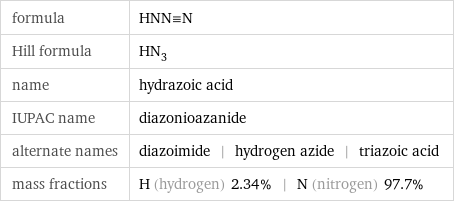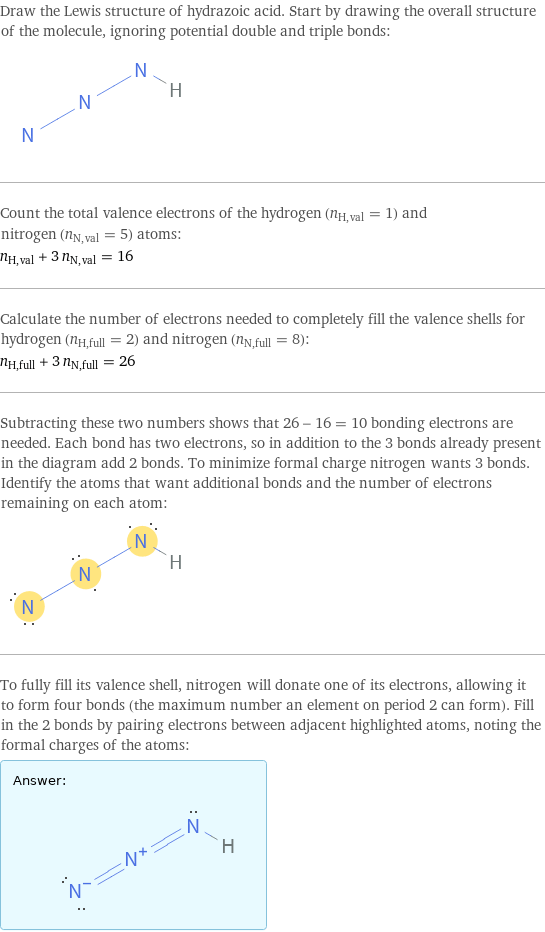Input interpretation

hydrazoic acid
Chemical names and formulas

formula | HNN congruent N Hill formula | HN_3 name | hydrazoic acid IUPAC name | diazonioazanide alternate names | diazoimide | hydrogen azide | triazoic acid mass fractions | H (hydrogen) 2.34% | N (nitrogen) 97.7%
Lewis structure

Draw the Lewis structure of hydrazoic acid. Start by drawing the overall structure of the molecule, ignoring potential double and triple bonds: Count the total valence electrons of the hydrogen (n_H, val = 1) and nitrogen (n_N, val = 5) atoms: n_H, val + 3 n_N, val = 16 Calculate the number of electrons needed to completely fill the valence shells for hydrogen (n_H, full = 2) and nitrogen (n_N, full = 8): n_H, full + 3 n_N, full = 26 Subtracting these two numbers shows that 26 - 16 = 10 bonding electrons are needed. Each bond has two electrons, so in addition to the 3 bonds already present in the diagram add 2 bonds. To minimize formal charge nitrogen wants 3 bonds. Identify the atoms that want additional bonds and the number of electrons remaining on each atom: To fully fill its valence shell, nitrogen will donate one of its electrons, allowing it to form four bonds (the maximum number an element on period 2 can form). Fill in the 2 bonds by pairing electrons between adjacent highlighted atoms, noting the formal charges of the atoms: Answer: | |
3D structure

3D structure
Basic properties

molar mass | 43.029 g/mol
Units

Chemical identifiers
![CAS number | 7782-79-8 PubChem CID number | 24530 SMILES identifier | N=[N+]=[N-] InChI identifier | InChI=1S/HN3/c1-3-2/h1H](../image_source/e57248452cfbbe7e62471f66d33481c5.png)
CAS number | 7782-79-8 PubChem CID number | 24530 SMILES identifier | N=[N+]=[N-] InChI identifier | InChI=1S/HN3/c1-3-2/h1H
Toxicity properties

threshold limit value | 0.11 ppmv
Units
